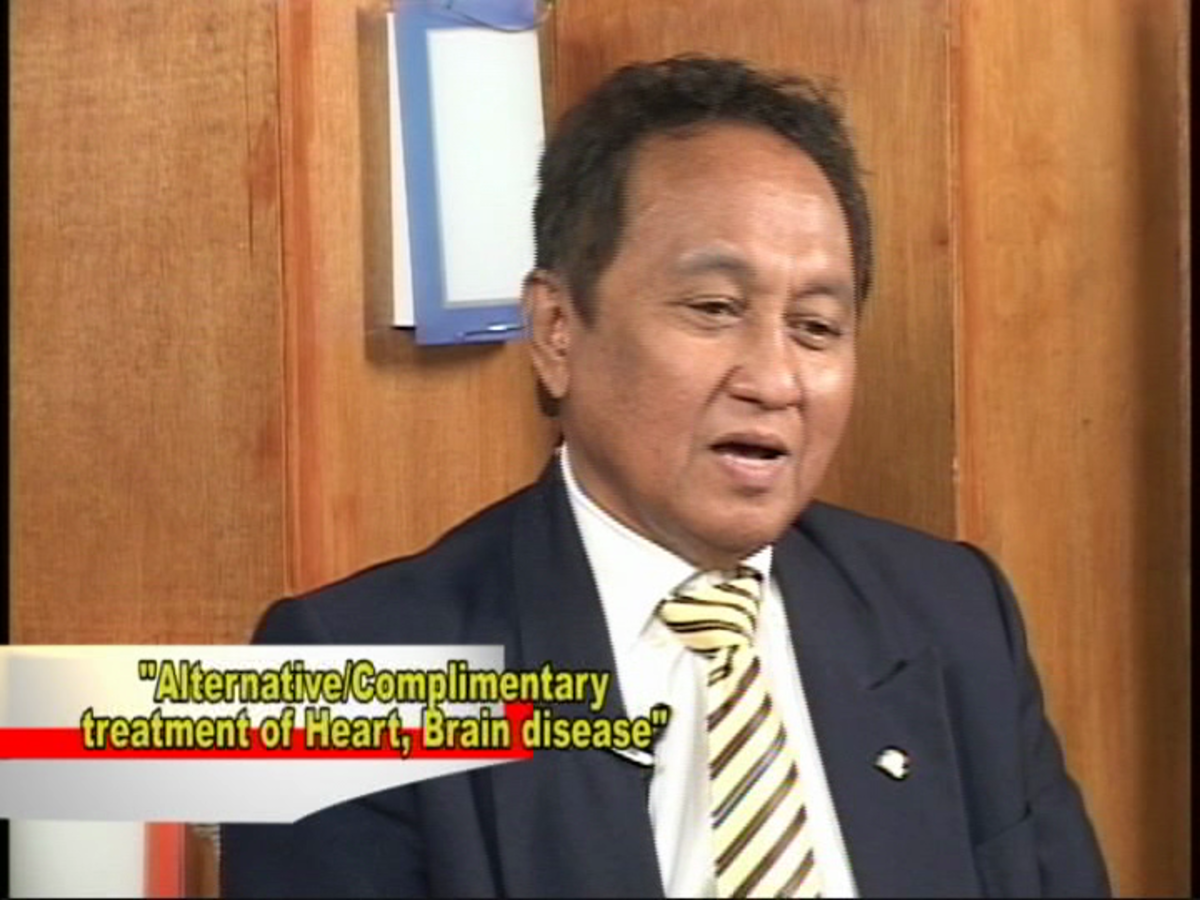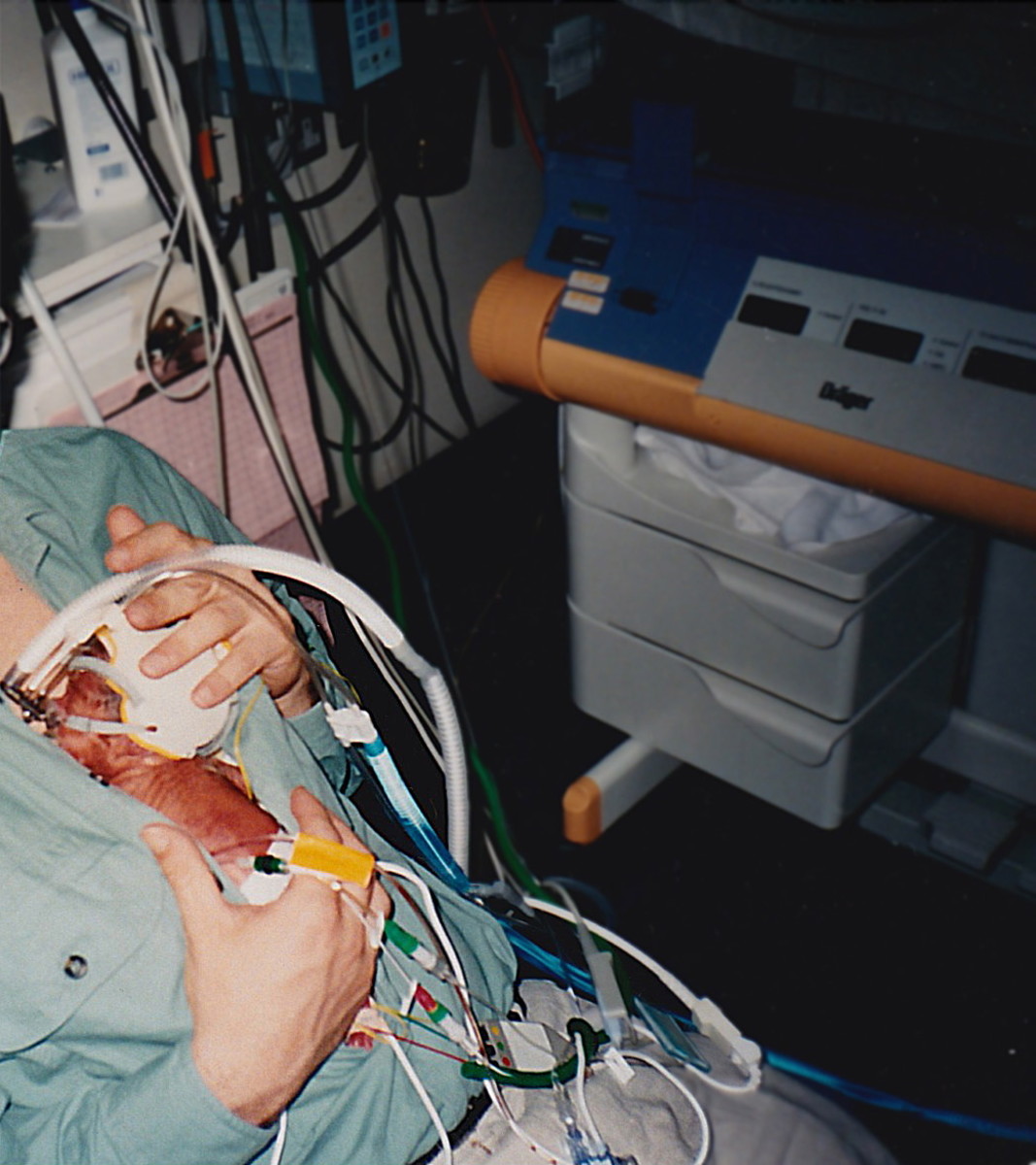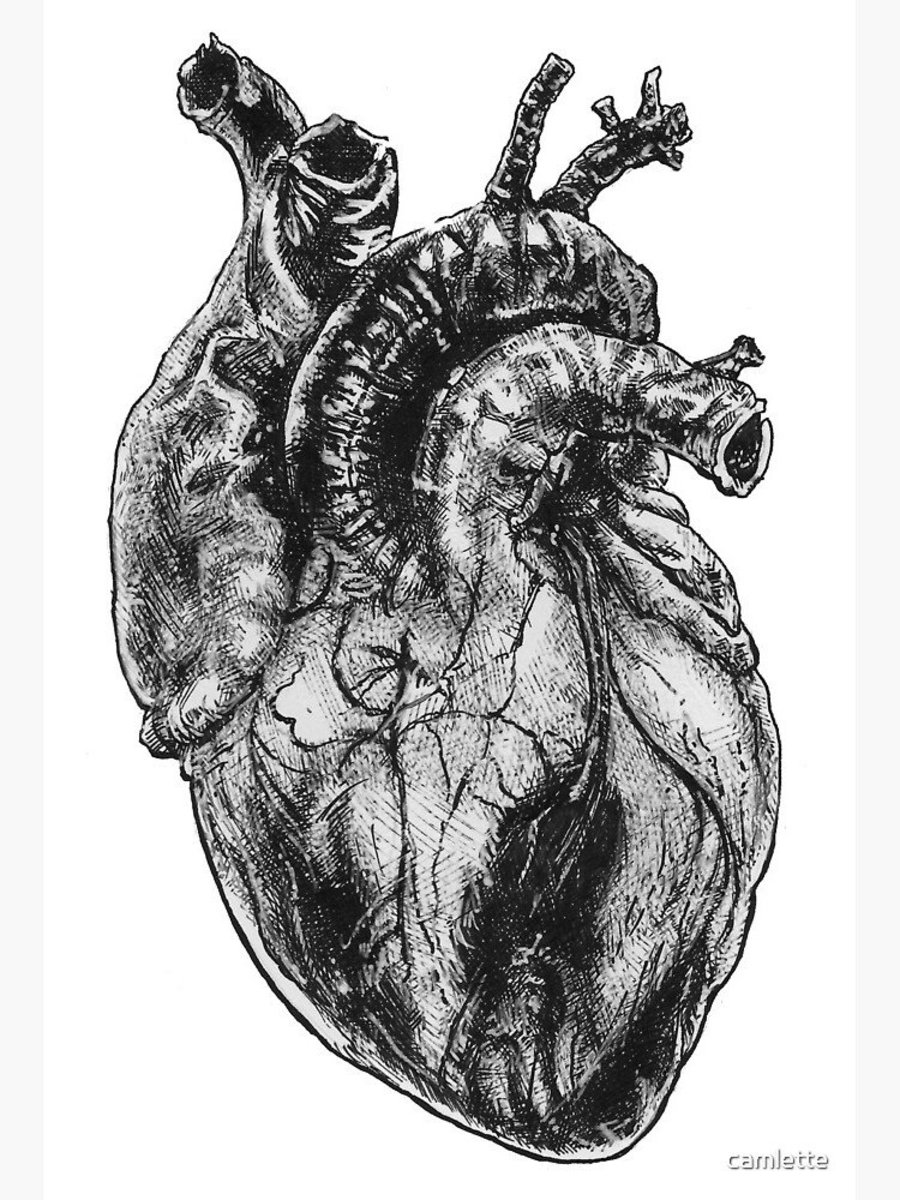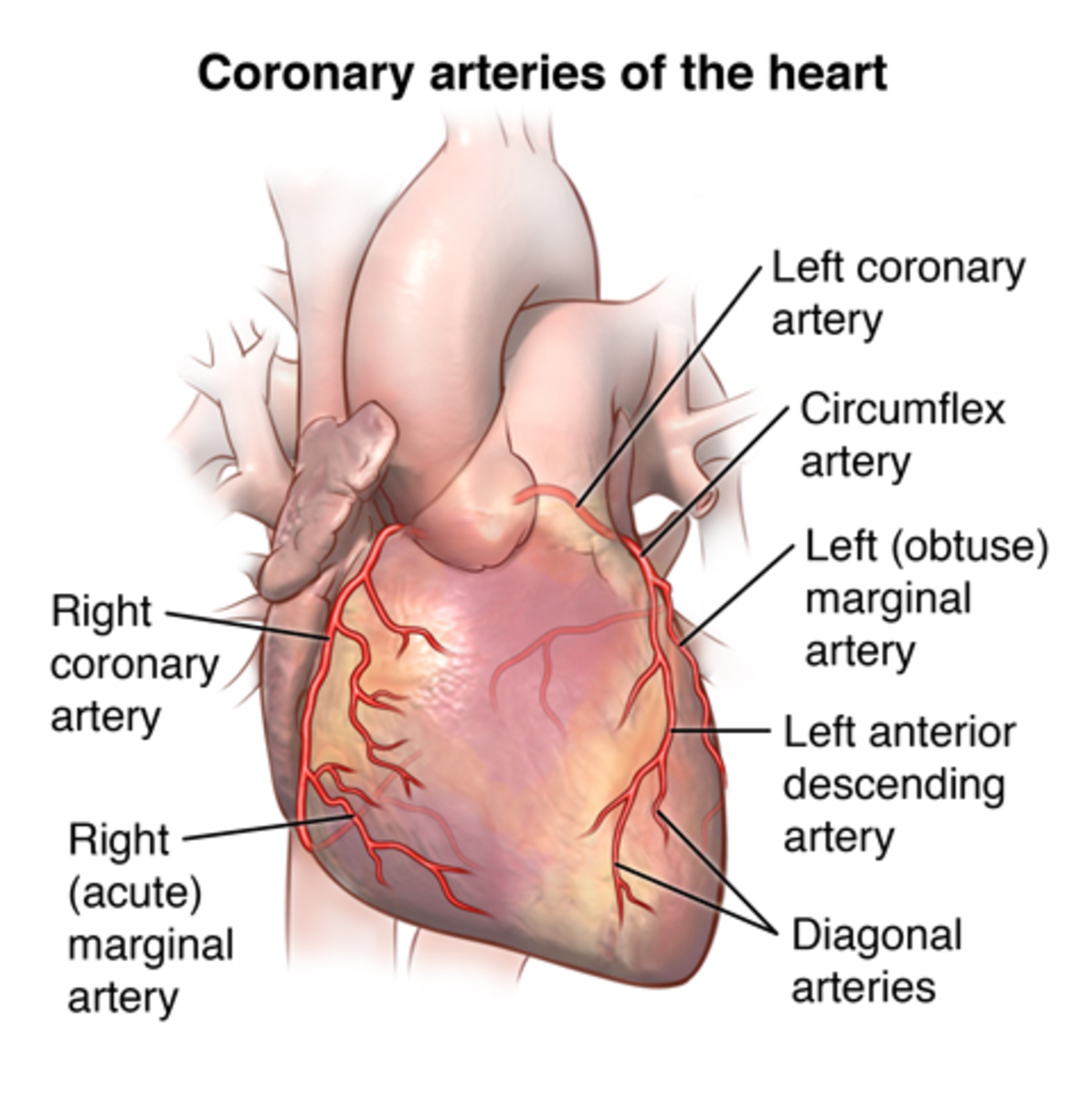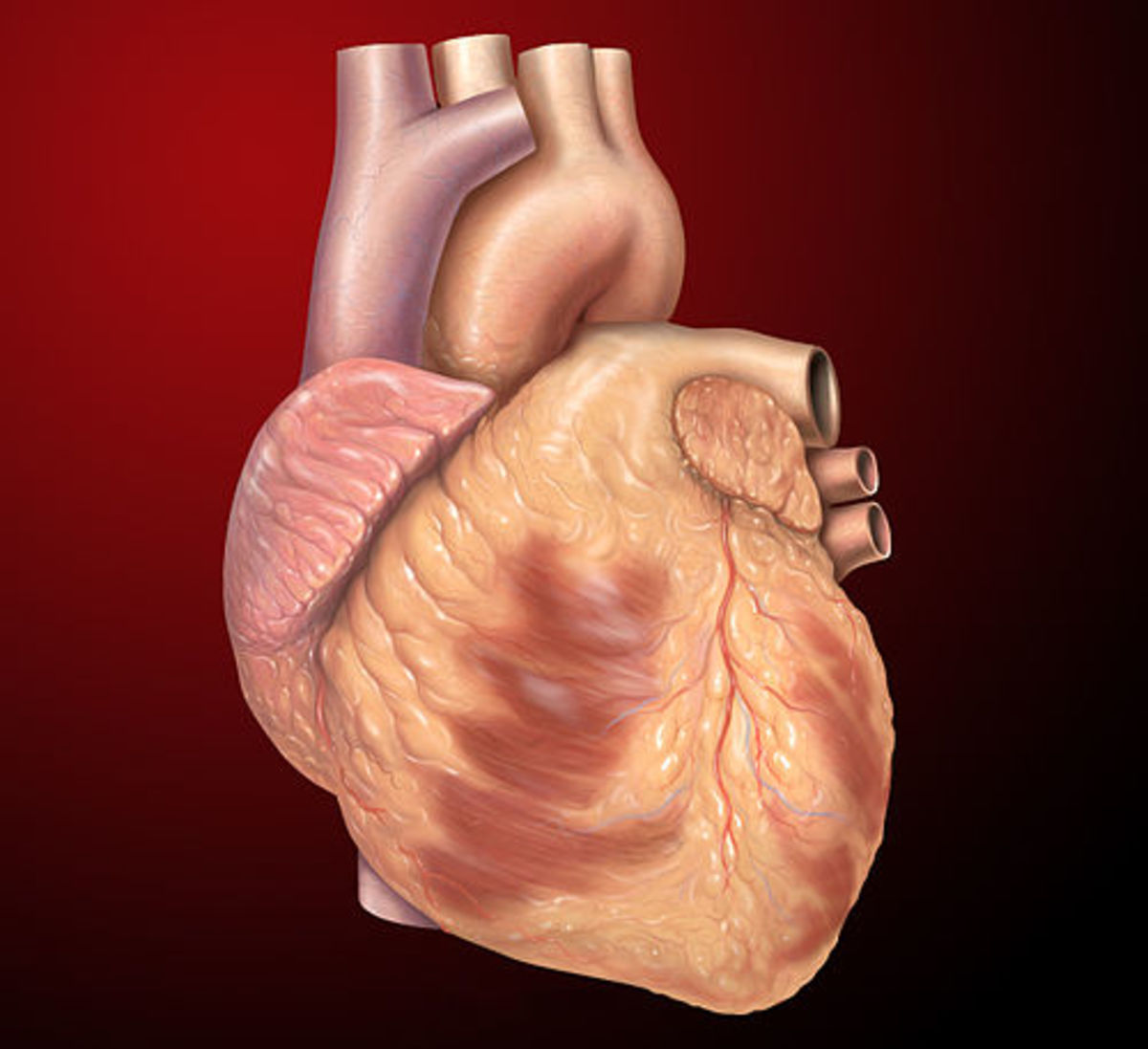"The Last Heart Attack" Film of CNN Missed Alternatives in Treating Heart Disease
Dr. Sanjay Gupta interviews Pres. Bill Clinton (photo adopted from CNN, Internet. March 28,2014)
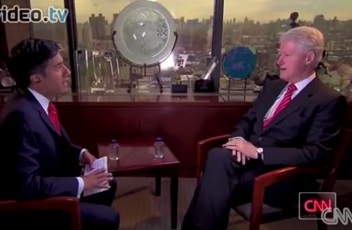
Heart and its coronary arteries; sufficient blockage of one or more results in angina or heart attack
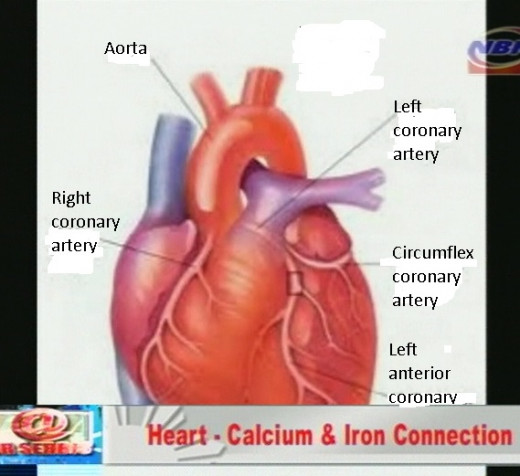
Only the conventional view, no alternative view in "The Last Heart Attack" film clip
“Heart disease is completely preventable,” is one of the good news that the documentary “The Last Heart Attack” brings.
Dr. Sanjay Gupta, a CNN correspondent, said he produced this documentary in one year. You can access it with the entry, gupta the last heart attack cnn. There are points in the film clip that I agree with and points where I hold contrary views.
I view the film clip through the framework of free radical theories of disease. What is that?
It is an alternative view to that of conventional medicine.
Conventional view of heart disease
Here is how I understand the conventional view of heart disease. It involves the four arteries that feed the heart muscles with blood, thus oxygen as blood carries oxygen. The right artery supplies blood to the right side. The left anterior descending artery feeds blood to the front side. The circumflex coronary artery supplies its back. About 25% of the blood goes through these arteries that wound around the heart like a crown that is why they are sometimes called coronary arteries. A coronary artery develops an occlusion in its inner wall. This occlusion consists of collagen, fibrin,elastin, cholesterol, calcium and other debris. When the occlusion, sometimes called plaque, occupies 50% of the diameter of the artery blood flow through it is still normal. However, when the plaque had grown up to about 75% of the diameter, symptoms are felt like fatigue and chest pain upon exertion. That chest pain is sometimes called angina pectoris or simply angina.
Up until 1997, conventional medicine could not pinpoint the cause of the plaque. Some doctors speculate that it is caused by cholesterol or shear stress. Instead of a cause or causes, risk factors were given as associated with heart disease like age, heredity, race, cholesterol, hypertension, obesity, lack of exercise and diabetes. It is declared that there is no cure for heart disease. Treatments prescribed are medication (dilators, antihypertension, blood thinner), angioplasty and coronary arterial bypass graft surgery. It is reversible by a change in lifestyle consisting of cholesterol-lowering drugs and by a halt in smoking (DeBakey, M. MD and Antonio Gotto, Jr., MD. The New Living Heart. 1997).
Free radical theories of disease view of heart disease
Free radicals and their derivatives are the principal causes of heart disease. A free radical is an atom or a molecule or a fragment of a molecule with at least one unpaired electron in its outermost orbital. For example, superoxide. A superoxide consists of two atoms of oxygen with one unpaired electron orbiting the whole molecule. This unpaired electron is unstable and to stabilize itself grabs another electron in a neighboring atom or molecule. The victim of grabbing is injured. A DNA (hereditary material) in the inner wall of an artery whose electrons are grabbed is injured resulting in mutation. Mutation results in atheroma, a benign tumor. To repair this injury, the body patches it up with collagen, fibrin, elastin, cholesterol, other debris. Calcium joins these later and serves as a cementing agent (Cranton, E. MD. Bypassing Bypass. Updated second edition. 1995). This repair job goes awry that these substances grow into a mound then plaque. Other free radicals are oxygen, molecular oxygen, singlet oxygen and ozone.
Derivatives of free radicals are also called reactive oxygen species (ROS) like hydrogen peroxide, hydroxyl radical, lipid peroxide and peroxynitrite. ROS acts like a free radical does.
Heart disease is preventable; it is reversible. That is. the plaque can be dissolved. Heart disease can be treated and cured.
Modifications shown in film clip
“The Last Heart Attack” uses the view of conventional medicine. However, there are new inventions and modifications.
Dr. Arthur Agatston invented the coronary calcium scanner. It can show the plaque inside the artery. The common tools to view plaque are by means of angiography and MRI (magnetic resonance imaging). Other ways to assess the health of heart muscles and arteries are by 2-dimensional echocardiography and PET (positron emission tomography).
One doctor who served as resource person of Dr. Gupta says that heart disease is completely preventable. This is contrary to earlier views.
Still conventional medicine sticks to risk factors. One doctor in the film clip says that it is the small LDL cholesterols that cause the plaque. (LDL means low density lipoprotein). Being small they can easily penetrate the inner wall of the artery and build up a mound. Large LDL cholesterols are useless in assessing heart condition, says he.
Check up is not a substitute for a change in lifestyle that includes diet.
Pres. Bill Clinton
Pres. Clinton is one of the resource persons of Dr. Gupta. During his two terms as USA president, Clinton passed his physical examinations. However, his heart disease progressed unnoticed.
In his second term he got Dr. Dean Ornish, MD as consultant. Clinton banned smoking in the White House (Ornish, D. MD. Dr. Dean Ornish’s Program for Reversing Heart Disease. 1996).
After his last term as president, in 2001, Clinton had symptoms of heart disease like angina. He went for check up that showed he had occlusions in four arteries of his heart. He went through a quadruple heart bypass in 2004. Clinton got well. In 2010 he went to distribute relief goods in Haiti that was struck by an earthquake. He got very tired and went for another check up. It was found that two of his arteries closed up. Whereupon he was fitted with angioplasty with stent. With his bypasses and stents, Clinton is up and well again if weaker than what is normal for his age in good health.
As an aftermath, Clinton said he has adopted an almost vegetarian diet. He shuns dairy, meat, and eggs; he moderates on oil. During Thanksgiving Day, he takes one bite of turkey.
Dr. Ornish (Director of Preventive Medicine Research Institute) has modifications on the conventional view. He says that heart disease can be reversed without the use of drugs. He still uses risk factors to partly explain the development of heart disease. However, he questions the role attributed to cholesterol. He cites in his book a large Finnish study on cholesterol that showed that persons who were given cholesterol lowering-drugs had a higher mortality rate than those who were not so given. He recommends two kinds of diets: prevention diet and reversal diet. He believes that loneliness and isolation play a large part in heart disease. He advocates meditation, yoga and support groups. He recommends vitamins.
Assessment
In the entire film clip, Dr. Gupta neither used the term ‘free radical' nor mentioned the free radical concept. Not one of his resource persons belong in a group of chelationist. Chelation therapy falls under the free radical theories of disease.
I have several Hubs on this topic like "Chelation and stem cell therapies completely repair the heart." I am undergoing infusion chelation therapy in the clinic of Dr. Arturo V. Estuita, MD a Filipino internist and chelationist who had trained on chelation in USA.
Risk factors as mentioned by conventional medicine only exacerbate heart disease that is caused by free radicals or ROS.
Apparently the attending cardiologist of Pres. Clinton did not mention to him alternatives in treating heart disease in getting his informed consent.
Why did his two bypassed arteries close up? One conventional medicine doctor explained that there was a "mechanical failure of the bypass."
The free radical theories of diseases explains it differently. Bypass surgery does not cure heart disease. It is only a temporary solution for angina, a palliative The causes of heart disease are still roaming around, free radicals and ROS, that are wrecking havoc. So plaque can grow on the bypassed artery and even on the saphenous veins used as graft. A saphenous vein that is usually used is taken from one leg.
Chelation therapy does four important things. One, it neutralizes free radicals and ROS. Two, it dissolves plaque. Three, it binds with and removes minerals (iron, copper) that accelerate the formation of free radicals and ROS. Four, it enhances the production of endothelium progenitor cells (EPC) that circulate stem cells and heal the inner wall of the artery. EPCs themselves turn into stem cell later on. Chelation therapy is an antioxidant whose ingredients are EDTA (ethylene-diamine-tetra-acetate), minerals and vitamins.
To be fair, It is possible that even if Clinton did not mention chelation therapy in his interview with Dr. Gupta, he might have been informed on this alternative treatment.
In USA it is considered as medical malpractice if a physician does not mention alternatives of treatment even if that treatment were not his specialty or that he disagreed with it.
Recently, chelation therapy passed the test of double blind statistical design. You can access that in You Tube. That study is "Trial to Assess Chelation Therapy" Results were presented at a meeting of the American Health Association held in Los Angeles, California on November 4,2012. TACT was sponsored by the National Institutes of Health at a cost of US$30 million. Chelation therapy is safe and effective.
It is probable that Dr.. Ornish knows that his diets contain antioxidants that belong in the free radical theories of disease. In fact, vitamins are antioxidants in that they donate their electrons to satisfy the hunger of oxidants for them. However, he does not mention 'free radical.' There are only two indirect references to it in the two editions of his book mentioned above, saying that when cholesterol is "oxidized," it becomes even more harmful. Free radicals and ROS are oxidants. He neither mentions the term nor the concept in this film clip.
Stem cell therapy
Dr. Gupta also did not mention stem cell therapy as an alternative in treating heart disease.
(I have several Hubs on this topic, like “How one stem cell turns into a human being,” and “Three successful paths in stem cell therapy”).
Stem cell research and stem cell therapy are fast advancing. One path in stem cell therapy has emerged since 2010. That is the use of nutritional supplement to activate stem cells to produce more of their kind and to produce more EPCs. The more EPCs, the faster the healing of damaged tissues, according to Dr. Neil Riordan, inventor of this supplement.
Another path is the use of reprogrammed adult cells in regenerating damaged tissues or organs. Reprogramming was discovered by Sir John Gurdon and Shinya Yamanaka. Yamanaka took a small part of adult skin cell; grew it in a dish. Then he added factors like Sox2, Kfl44, cy-Mec and Oct4. The skin cells produced embryonic stem cells, according to Prof. Jill Helms, a stem cell researcher at the Stanford Medical School of the Stanford University in California, USA. These can be used in therapy. Recently, other cell lines have been used successfully. cy-Mec.was dropped because it was found that it is a proto-oncogene that promotes formation of cancer. It is replaced with Nanog.
Still another path is the use of native stem cells. These are reactivated to produce more of their kind and regenerate damaged tissues. For example, stem cells from cord blood are used as activators in curing leukemia. Over 70 diseases can now be cured with cord blood stem cells.
Hubs on chelation therapy by conradofontanilla:
http://conradofontanilla.hubpages.com/hub/Why-Is-Heart-Disease-The-Number-One-Killer-In-the-World
http://conradofontanilla.hubpages.com/hub/What-For-Is-A-Theory-of-Heart-Disease
http://conradofontanilla.hubpages.com/hub/How-To-Treat-Stroke
http://conradofontanilla.hubpages.com/hub/What-Would-I-Do-If-I-Had-a-Heart-Attack


![The Young Ones (Preservation Remix) [Explicit]](https://m.media-amazon.com/images/I/61C6O+H8xdL._SL160_.jpg)
